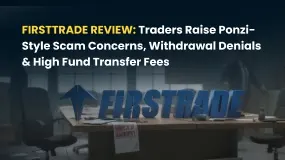简体中文
繁體中文
English
Pусский
日本語
ภาษาไทย
Tiếng Việt
Bahasa Indonesia
Español
हिन्दी
Filippiiniläinen
Français
Deutsch
Português
Türkçe
한국어
العربية
THE VALUE OF ANALYSIS IN THE FOREIGN EXCHANGE MARKET
Abstract:The two primary types of analysis used in the forex market are technical and fundamental. The best sort of analysis to utilize and if traders should mix the two to improve their trading decisions have been hotly contested topics since the invention of trading.

The two primary types of analysis used in the forex market are technical and fundamental. The best sort of analysis to utilize and if traders should mix the two to improve their trading decisions have been hotly contested topics since the invention of trading. The efficacy of both technical and fundamental analysis is questioned by the “efcient-market hypothesis,” which holds that market prices are intrinsically unpredictable. All trading analysts and experts agree that both methods of analysis offer benefits and features that can aid traders, despite the fact that disagreements over the best type of analysis have raged for years. Analysts agree that mastering one or both forms of analysis could require a lifetime of work and application. While candlestick analysis is said to have originated in China in the 18th century using a method developed by Homma Munehisa to estimate demand for basic commodities like rice, technical analysis was first applied by Dutch traders and merchants in the 1700s.
The majority of technical indicators, according to many fundamental experts, are “self-fulfilling and lagging,” which prevents them from working. As a result, they cannot be used. The most widely used indicators, including PSAR (parabolic stop and reverse), Bollinger bands, stochastics, DMI, and MACD, could be called into doubt as to their usefulness and value.
Although many traders who use technical analysis in their trading strategy would definitely assert that employing indicators to enter and exit trades genuinely works, this is not universally true.
Ironically, even on a pretty plain, indicator-free chart, practically all fundamental analyst-traders continue to employ technical analysis techniques. They might choose between candlestick, Heikin-Ashi, line, pin-bar, etc. as their preferred price display method. Alternately, they may employ a pretty simple trading strategy, such as higher lows, lower highs, moving averages, head and shoulders patterns, fractals, pivot points, Fibonacci retracement, and drawing trend lines, among other things. A chart can appear as crowded as one with many of the aforementioned indicators when some of these algorithms are applied to it. Also, aren't decisions about where to set stops and put limit orders also examples of technical analysis?
So, even traders who only use fundamental analysis must employ technical analysis; they merely choose to focus on news, events, and data releases while making or confirming their conclusions. And they'll stay up to date on all releases, possibly using Twitter or spending more money to use something called “a squawk,” in an effort to stay ahead of the market and their trading decisions.
What is Technical Analysis in Forex?
Technical analysis, sometimes known as TA, is the process of predicting future changes in financial price based on an analysis of previous price changes. Using technical analysis, traders may predict how prices are likely to change over time. A wide range of indicators and charts are used in technical analysis to show price changes over a chosen time period. Traders attempt to predict the future direction of the price by examining statistics acquired from trading activities, such as volume and price change.
News is not often given much consideration by technical analysis traders.
They hold the opinion that a chart will eventually expose the detail and possibly the drama of an economic news release. In fact, pricing on a chart can frequently respond before traders have had a chance to read the news or see data presented in order to make a decision. This might be a result of algorithmic/high frequency traders being able to react to news quickly before many other traders can.
What is Fundamental Analysis in Forex?
Fundamental analysts look at an investment's fundamental value; in the case of foreign exchange, this necessitates a careful investigation of the economic factors influencing the value of a country's currency.
The movement of a currency is influenced by numerous important fundamental elements, many of which are included in what are referred to as “economic indicators”.
Economic indicators are statements and information about a nation's economy that are made public by the government or a commercial organization like Markit. Economic reports are the primary tool used to assess a nation's economic health.

Disclaimer:
The views in this article only represent the author's personal views, and do not constitute investment advice on this platform. This platform does not guarantee the accuracy, completeness and timeliness of the information in the article, and will not be liable for any loss caused by the use of or reliance on the information in the article.
Read more

Firsttrade Review: Traders Raise Ponzi-Style Scam Concerns, Withdrawal Denials & More Issues
Have you lost all your capital while trading via Firsttrade? Does the US-based forex broker disallow you from withdrawing funds? Do you have to pay massive fees when transferring funds? Does your trade get affected because of frequent malfunction in the trading app? These have been haunting many traders at Firsttrade. Consequently, many of them have raised complaints online. In this Firsttrade review, we have shared such complaints. Keep reading to know about them.

Defcofx Review: Spread Manipulation & Poor Customer Support Outrage Traders
Does the poor customer support service leave you stunned when trading via Defcofx? Do you receive blunt, negative responses from the support team on several trading queries? Does the Saint Lucia-based forex broker pile on the losses for you by manipulating forex spread charges? In this Defcofx review, we have shared some complaints made against the broker. This will further answer your question: Is Defcofx real or fake?

How to Add and Take Out Money from Amillex Broker: A Complete Guide
Good money management is the foundation of successful trading. Learning how to make an Amillex Broker deposit and withdrawal is your first step toward trading with confidence. We know that for any trader, moving money must be safe, fast, and simple. This guide gives you a complete, step-by-step walkthrough for all amillex broker funding activities, so you can manage your account with total clarity. The whole process, from your first deposit to taking out profits, is made to be simple. You start by logging into your secure client area, picking a payment method that works for you, choosing the amount, and confirming the transaction. This guide will cover detailed deposit instructions, a full breakdown of withdrawal steps, a comparison of available payment methods, and a detailed look at the security measures protecting every transaction.

MH Markets Overview: Fees, Platforms, and Regulation
Choosing a forex broker is an important step for any trader. With so many options available, the main question is always: is this broker a safe and effective partner for my trading goals? This review is designed to answer that question about MH Markets. We will examine the key parts of their service—regulation status, trading costs, platform features, and overall user experience—to give you a clear, complete picture. Our goal is to give you the information you need to decide if MH Markets fits your strategy and risk comfort level.
WikiFX Broker
Latest News
Annual Sales Of New Vehicles Expected To Hit Only 15.7 Million Units: Cox
Currency Calculator



